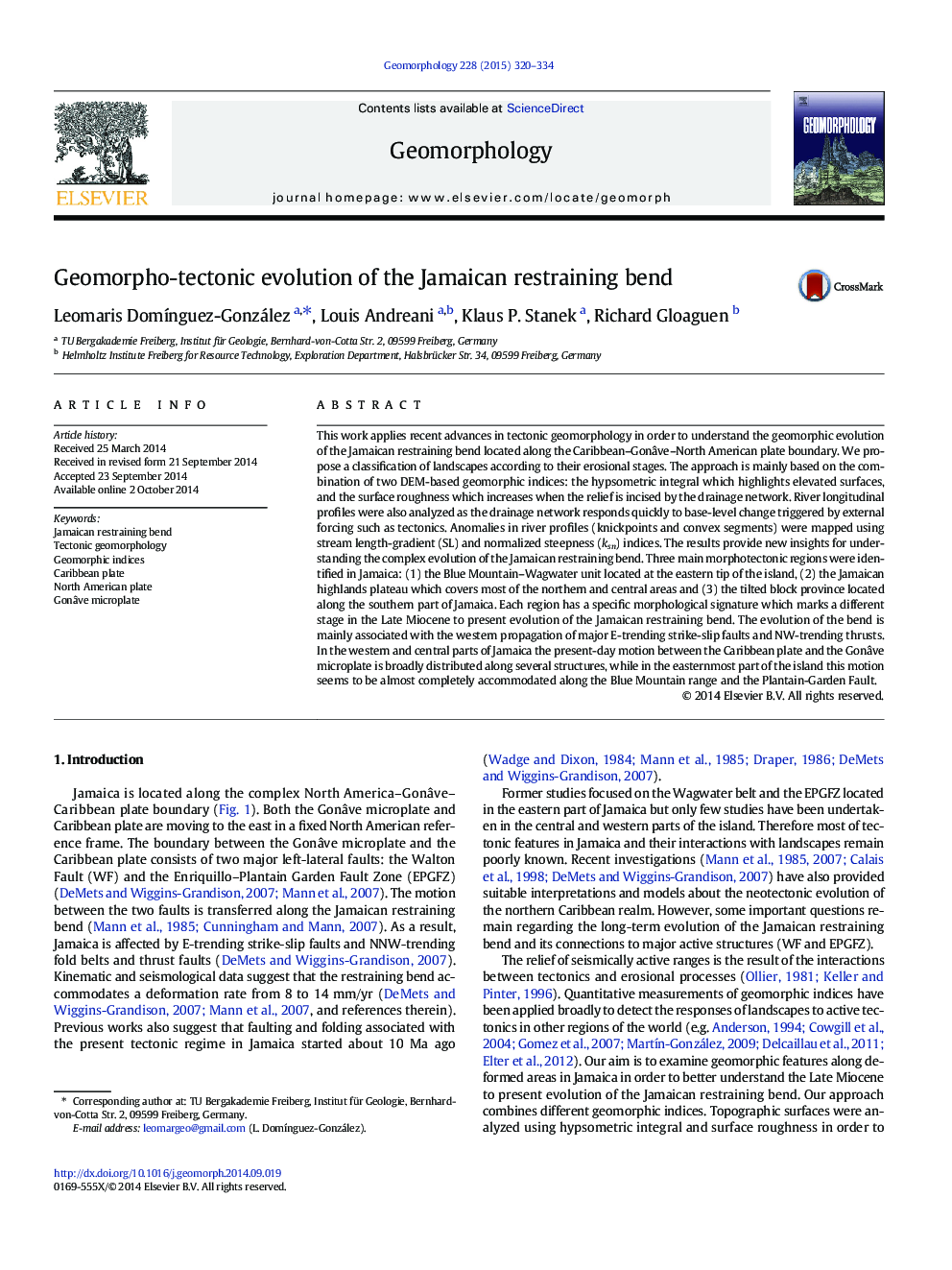| کد مقاله | کد نشریه | سال انتشار | مقاله انگلیسی | نسخه تمام متن |
|---|---|---|---|---|
| 6432274 | 1635421 | 2015 | 15 صفحه PDF | دانلود رایگان |
- The Jamaican restraining bend was analyzed using geomorphic indices.
- Anomalies in river profiles are associated with major tectonic features.
- Surface analyses were used to classify landscapes according to their erosional stages.
- The restraining bend was divided into three main morphotectonic regions.
- The tectonic evolution is associated with a westward propagation of main faults.
This work applies recent advances in tectonic geomorphology in order to understand the geomorphic evolution of the Jamaican restraining bend located along the Caribbean-Gonâve-North American plate boundary. We propose a classification of landscapes according to their erosional stages. The approach is mainly based on the combination of two DEM-based geomorphic indices: the hypsometric integral which highlights elevated surfaces, and the surface roughness which increases when the relief is incised by the drainage network. River longitudinal profiles were also analyzed as the drainage network responds quickly to base-level change triggered by external forcing such as tectonics. Anomalies in river profiles (knickpoints and convex segments) were mapped using stream length-gradient (SL) and normalized steepness (ksn) indices. The results provide new insights for understanding the complex evolution of the Jamaican restraining bend. Three main morphotectonic regions were identified in Jamaica: (1) the Blue Mountain-Wagwater unit located at the eastern tip of the island, (2) the Jamaican highlands plateau which covers most of the northern and central areas and (3) the tilted block province located along the southern part of Jamaica. Each region has a specific morphological signature which marks a different stage in the Late Miocene to present evolution of the Jamaican restraining bend. The evolution of the bend is mainly associated with the western propagation of major E-trending strike-slip faults and NW-trending thrusts. In the western and central parts of Jamaica the present-day motion between the Caribbean plate and the Gonâve microplate is broadly distributed along several structures, while in the easternmost part of the island this motion seems to be almost completely accommodated along the Blue Mountain range and the Plantain-Garden Fault.
Journal: Geomorphology - Volume 228, 1 January 2015, Pages 320-334
